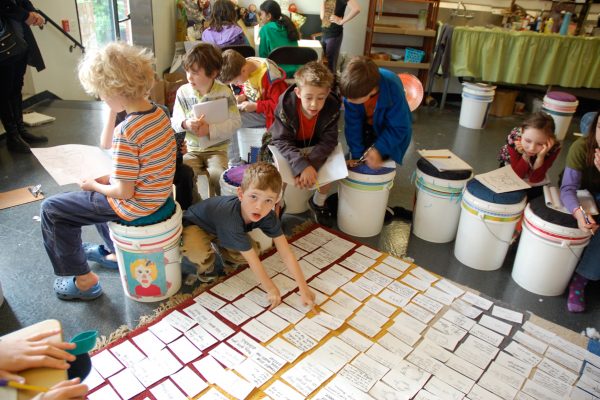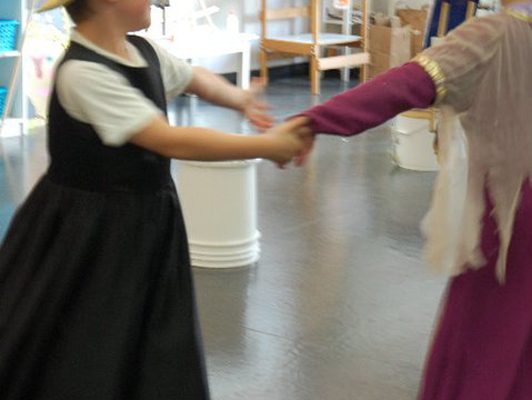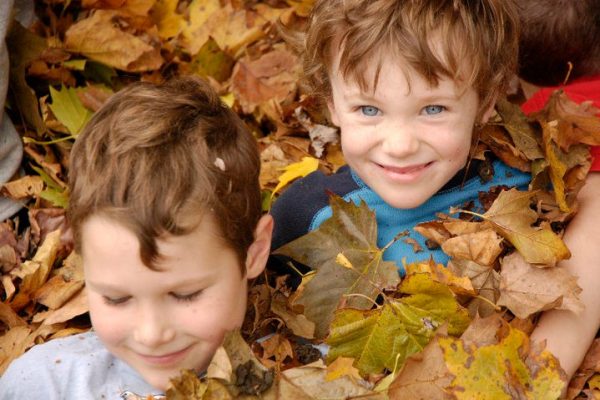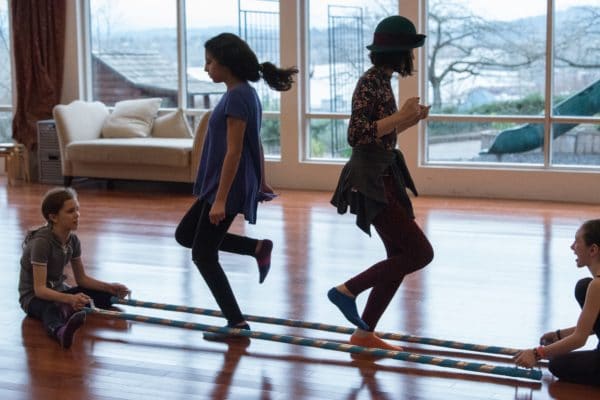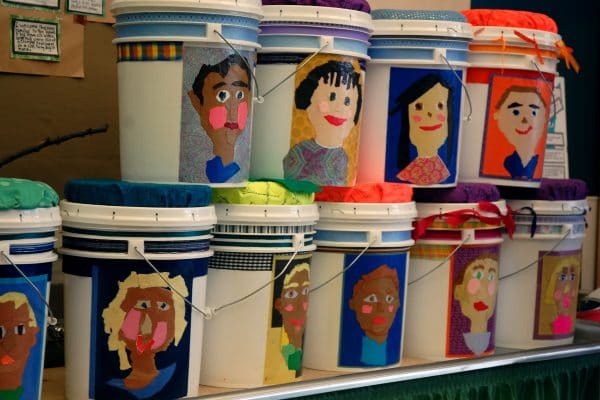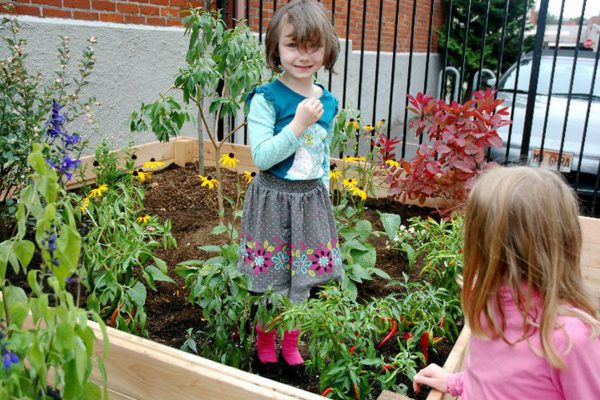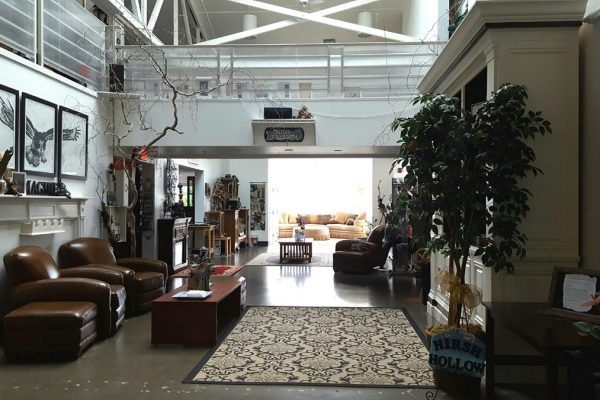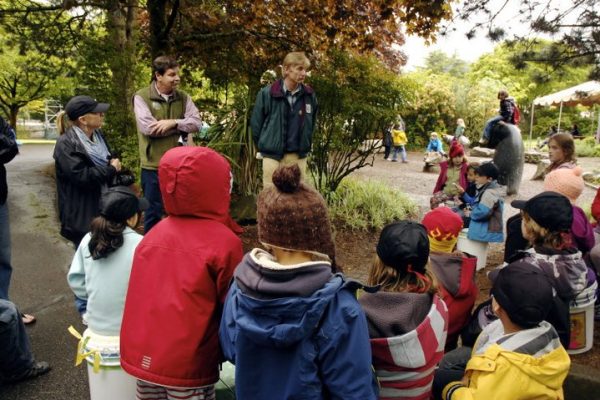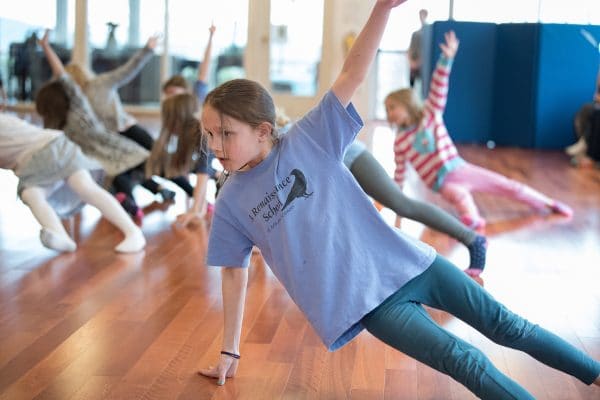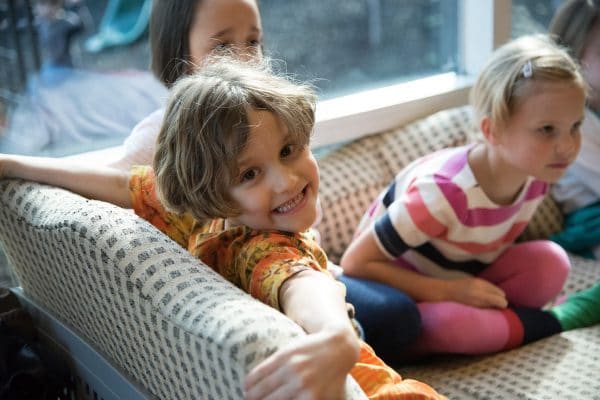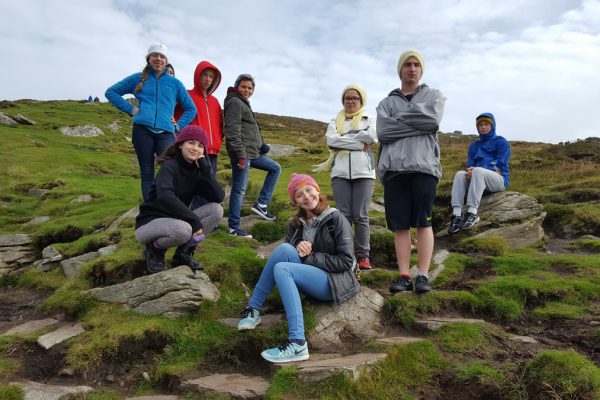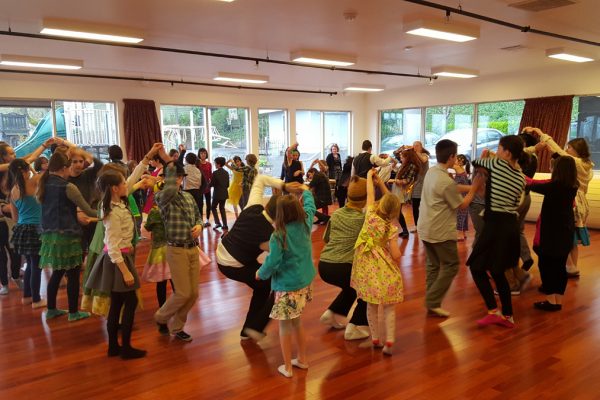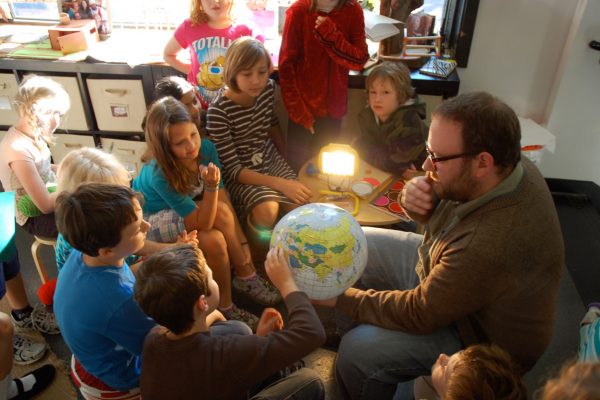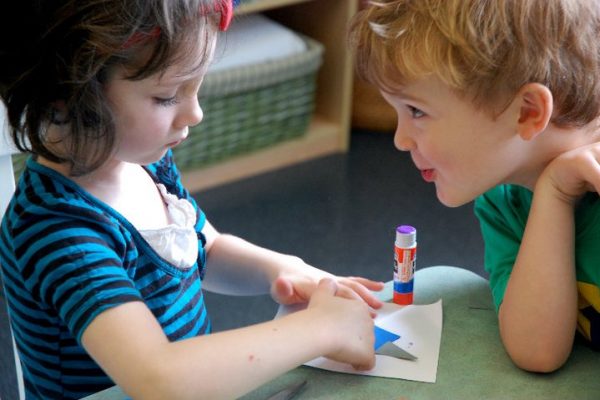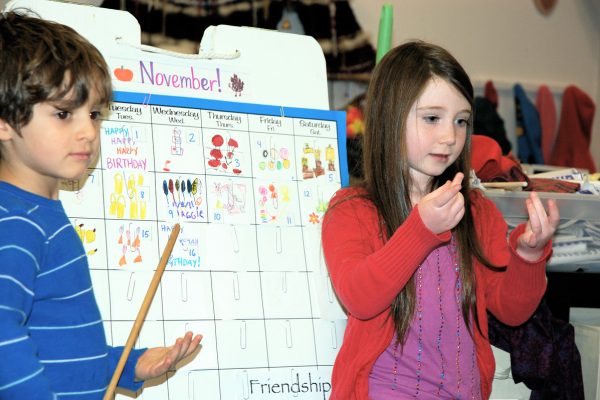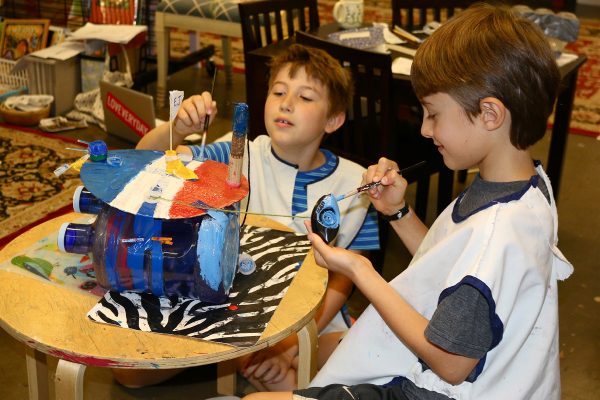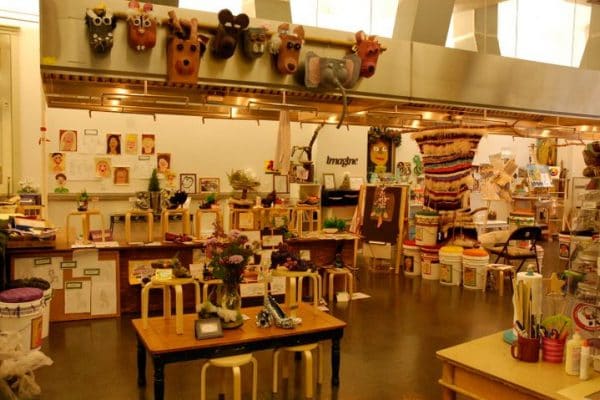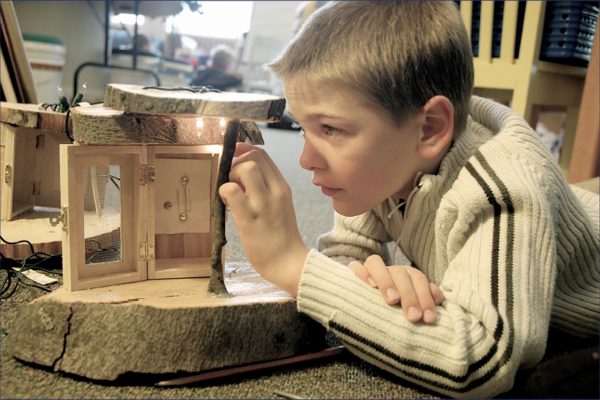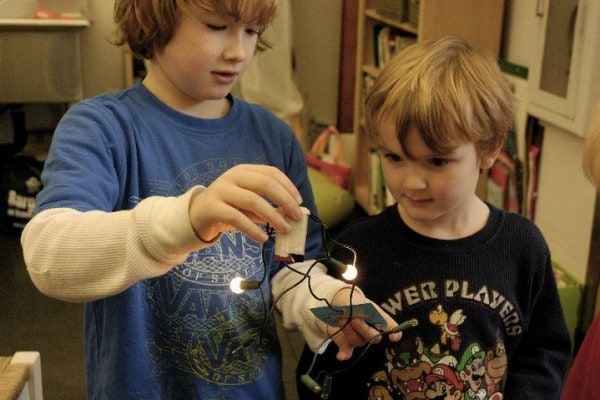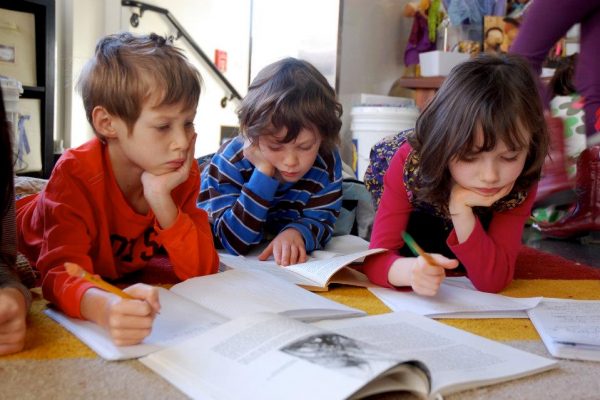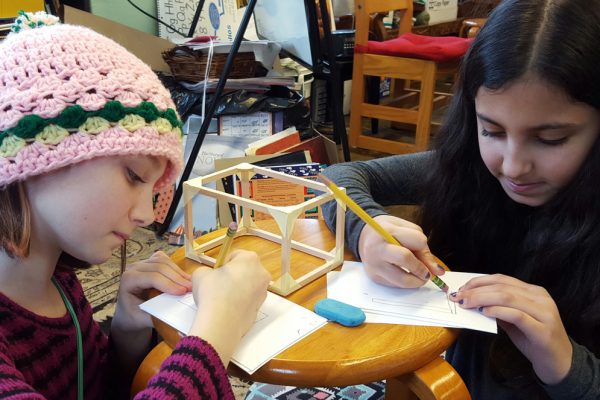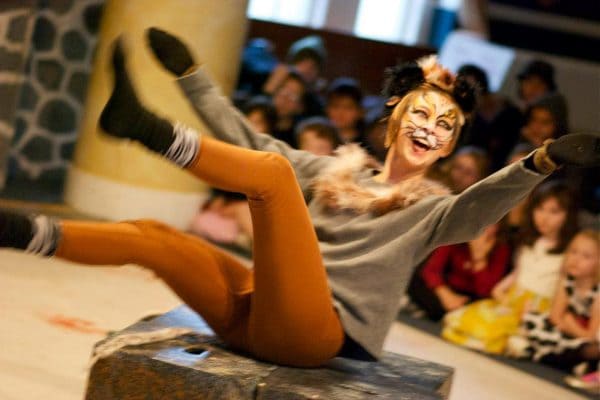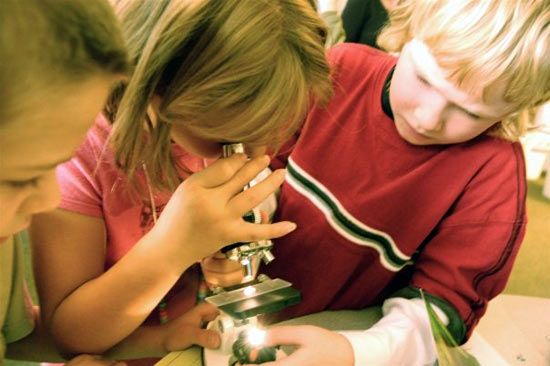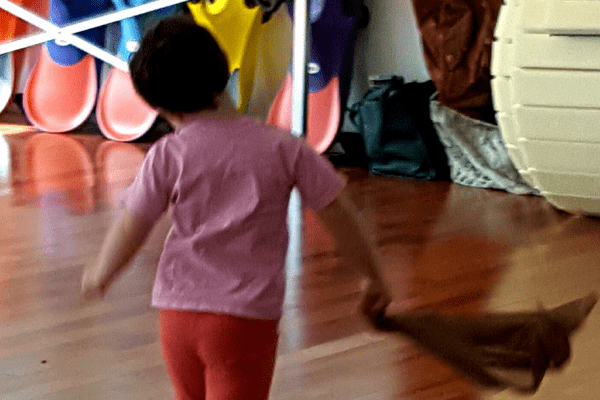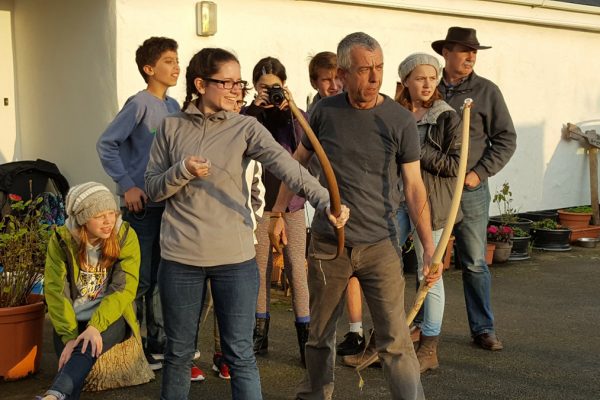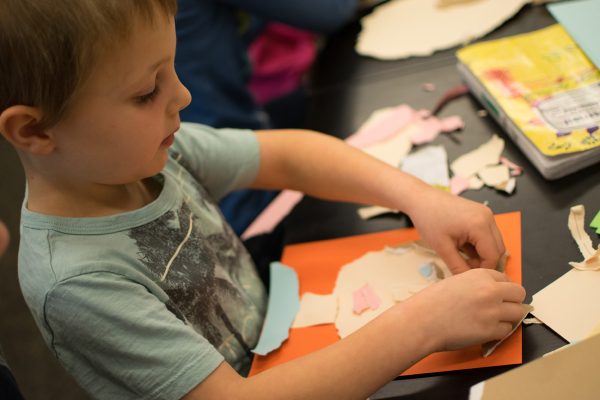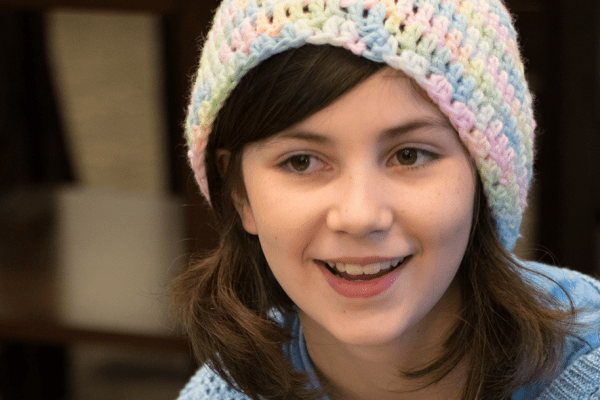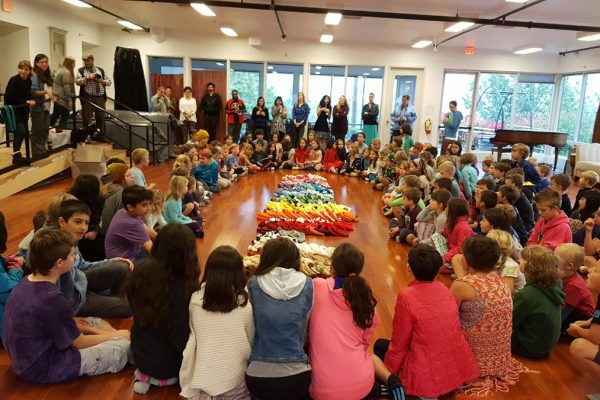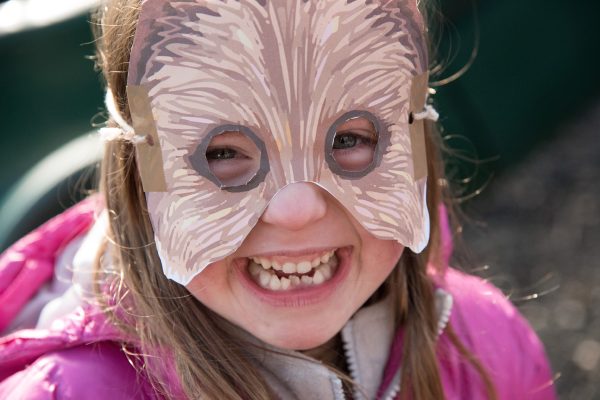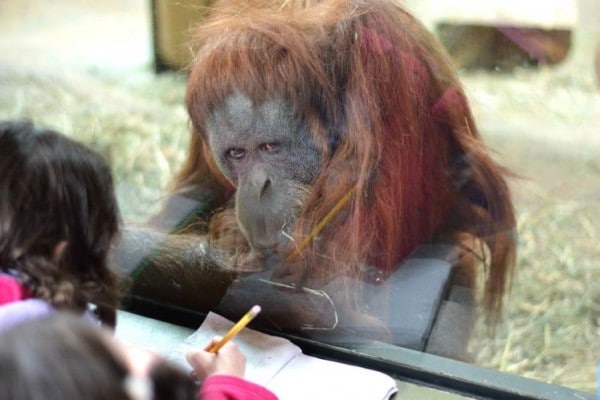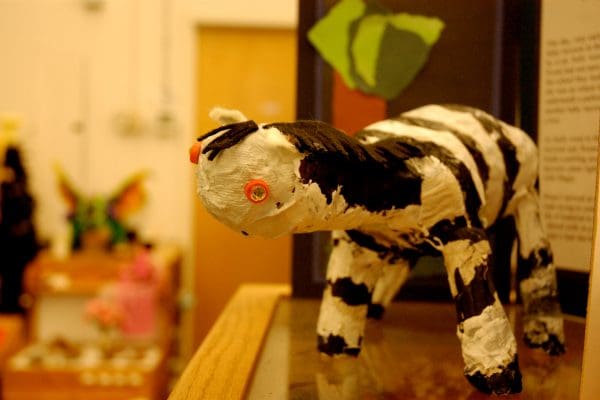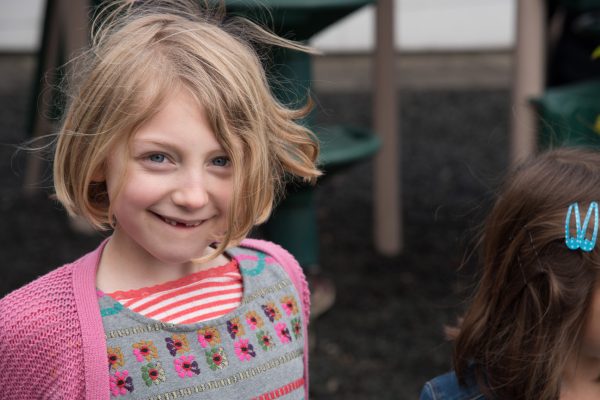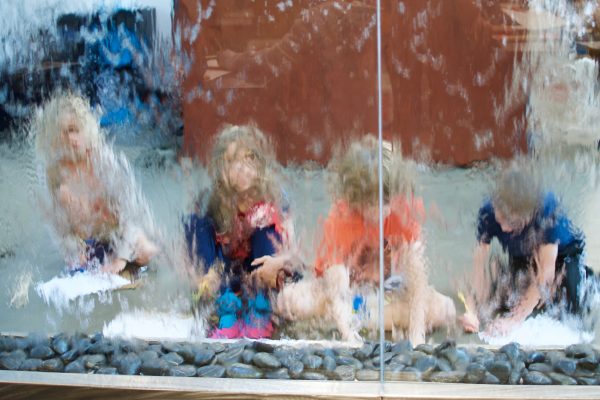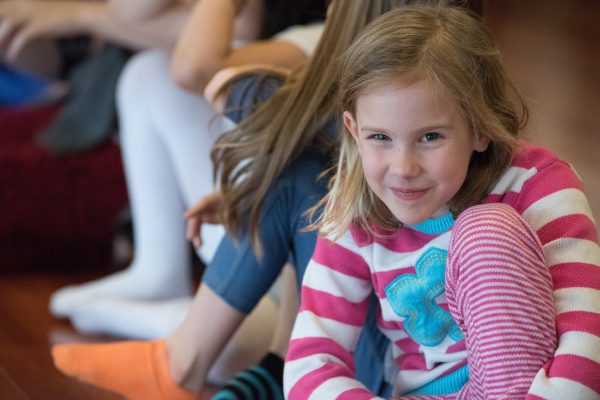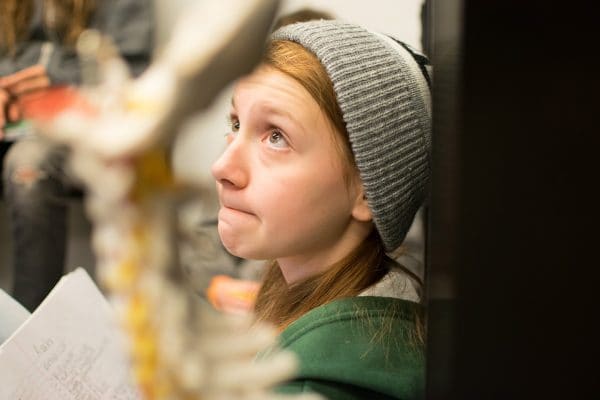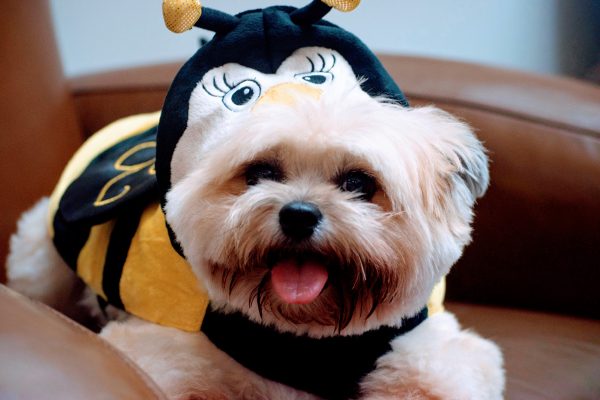Renaissance School has limited room for middle schoolers to join our creative family.
We honor childhood and educate for life with an emphasis on inquiry, applied scholarship, leadership and service. Our values and practices align with families seeking…
- extended day and extended year
- small class sizes
- personalized instruction
- academic learning integrating art, design, science and engineering
- time for reflection, collaboration, and craftsmanship
Why Ren Middle School?
Some parents may wonder about the benefits of placing or keeping a youngster in a smaller environment for the years that are traditionally housed in a middle school. In some areas, the K-8 structure is offered in place of the more traditional K-5, 6-8, and 9-12 system of separate facilities. Research points to an environment of “extended family,” focus on developing responsibility and leadership, and a more integrated form of academic learning to fit the needs of the developing mind. Smaller environments offer an ethos of “safety” (psychological and physical), relationships based on being known well, and consistent and sustained interactions with adults. Extended, intimate learning translates to more personalized support and challenge, with additional time to develop healthy past-times and practice positive decision-making skills.
At Ren, we invest time in developing collaboration, offer support to identify and extend individual aspirations to make civic contributions, create bonds with the community and its resources, and are present for families and youngsters grappling with changing social-scapes as the peer group ages. We provide timely expert consultation in human sexuality, personal development, and constructive peer mediation.
Teens who experience this type of instruction and expanding circles of support likely become self-confident learners who enter the broader world of schooling and community with grace, self-reflection, inner-strength and intrinsic motivation, with a value for stewardship. Ren’s returning high school students have reported feeling more prepared than peers from other settings with academic and study skills. They appear to easily engage in the larger environment, self-confident and assured of their individual power to advocate for themselves, navigate the social maze, and make a difference.
Widening the social group as a child matures is part of a healthy lifestyle. At school, the focus is on learning in the peer group. After-school classes, camps, sports organizations, and neighborhoods address the need for broader interaction, child-specific interests, diversity, and the development of long-term relationships that may continue past the school years based on meaningful common-ground.
The Ren community values for leadership and service focus youthful energy. Elder projects and mentorships take Ren scholars in to the community and beyond through civic participation, in performance, and as ambassadors overseas.
Girls’ Guild
Celebrating writers
In May we launched our second Girls’ Guild, this year reading William Butler Yeats (“Stolen Child”) and Alfred Lord Tennyson (“Lady of Shallott”.) We compared earlier and later versions, as writers often publish multiple drafts as their own craft evolves. We listened to the ballad and the shorter version of “Lady of Shallott” in the music written and sung by Loreena McKennitt. (Good poetry sometimes becomes the lyrics of lovely music!) We unraveled the meaning of old English, some unusual vocabulary, imagery, context, and grammar usage… setting (place, time, mood), emotion, motives, text connections, and personal meaning. We listened to Loreena’s song “Old Ways” which may have been inspired by a traditional Selky tale. Of course, we also tried our own hands at such writing. Along the way we thought about the imagery in fairytales… the forest, the tower, the witch…and thought about how those are analogies for strong forces of change, of transformation in a life journey, of becoming. Often the powerful element simply lies within us. So, carrying traditional stories, with beautifully feathered pencils, we laid our tracks in verse that mimicked the rhythm and rhyme scheme used by Tennyson in “The Lady of Shallott.” Amazing things happened as we stretched to use a specific 8-6 syllabic form and complex 4-1-3-1 pattern. Having smithed our words as fine crafts-folks, we are ready for an audience… YOU!
Little Red Riding Hood
The Head of Hog
Wonderland
Stolen Child
The Selkie Bride
The Candy House
Cinderella
A Recital of Writing
A Display of Talent
Our work combined the time period and circumstances of the suffrage, today’s opportunities for women, poetry, and glasswork. We began with with “Suffragette,” a main feature film that was recently released. It is an amazing tale of women’s lives in England during the Industrial Revolution (connection to content studies), heroic figures, the changing of laws which created a change of conditions and opportunities for generations, the currency of gender equality issues, and the need to be active in civic life. “Suffragette” illustrates the evolution of photographic surveillance and the issues that surround inference and evidence. It depicts the poverty and burdens of working women in subservient roles of the time and thus has some scenes that are dark, but not overly dramatized…
We discussed the obvious legal changes, political overtones, familial circumstances and roles, expectations and opportunities of a layered class structure, and the subtler shifts in individual psyches when a young woman grows up with roots in one set of standards and is confronted or offered a new stage on which to live her life.
Our Ren authors interviewed wise women who are inspirational in the writers” lives, searching for nuggets that would illustrate the personal, present-day results of such social and economic upheaval and courage. The interviews offered images and ideas that became one strand of the three-voice poem; the other two strands of the braid were created from images from the film and our own voice of gratitude and wondering. One of the three strands became the “spine,” of the poem, holding its own identity and acting as the structure through which to weave the other two “voices.”
We also investigated Cubism, a “cracking up of the world” of sorts, that allows us to look at pieces, move them around, reinvent, and re-see the more traditional portrait of our faces. We used cut-paper geometric shapes, played with positioning, combined front-view with side-view portrait aspects, and disregarded natural colors for the representation of our features. The result was playful and sometimes startling. We use the concepts of juxtaposition, shapes, and layers, and tried our hand at creating more Cubist gems from random tack-fused glass shards found in the bins at Aquila Glass school.
Combining colorful shape and ideas, under fire and over time, yields a strong, fused integrity. It is amazing to see who we become when we experiment with our traditional “faces” and when our “voices” are strong and supported by others!
Elder Projects
Betty Ashlock:A Story of Childhood
Elder Project by Cooper
(From an interview, this retelling grew into an illustrated picture book, shared with Betty, and read aloud to the school community in the summer of 2014.)
As the sun poured over the hills, bathing everything in soft, golden light, the children of the Zollenger house rose from their beds, stretching and yawning. The birds chirped wildly and the gentle smell of new blossoms crept across the valley, tickling their noses as they awoke.
Bustle began with whining creaks from the old wooden floor boards of the cabin as the family shuffled about. One by one they rolled out of bed, slipped on their well-worn overalls, and prepared for the adventure ahead. As usual, Glen announced that he would stay home to look after the chores, preferring the indoor work. It was the sisters’ job to rally the troops, gather books, pack lunch for everybody, and fill the water bucket. The siblings took one last look around to make sure they had everything… and they were off!
Beecher, the youngest brother, dragged the hoe along behind him, stirring clouds of dust on the earthy path as he skipped along. The luscious green grass danced and mushed beneath their toes as the morning dew melted. They wound their way up the hill strewn with little flowers peeking out everywhere they looked. It was quite a parade! Turkeys’ heads bobbed up and then back down again, pecking on the tasty morsels buried in the rich dirt. The band of content children followed close behind them, herding the birds up the hill.
As they reached the top, a rattling sound hung in the air. It was almost a happy sound, one that never scared them.
Whenever the turkeys found a snake they circled it with their heads down, entrancing the slithering beast. Meanwhile, Beecher lifted the hoe as high above his head as his little muscles would muster, gripping the handle tightly and then forcing it downward with all his might… He was well practiced. Beecher didn’t disappoint his attentive audience this time!
Soon after the snake encounter, the children all plopped down in the shade of a giant scrub pine to rest their legs and Betty pulled out a book. As the turkeys grazed, she read aloud, with all of the wee ones huddled around. Her voice was soft, sweet, and it carried on the wind. As the story withered to an end, the turkeys wandered out of sight and the youngsters chatted for a while, spinning dreams and telling tales. Shirley’s ash blonde hair blew in the breeze as she refocused her attention. Something felt wrong. She brushed off the thought, uncertain of her nagging worry.
Later, after a quick trip to the keyhole in the ridge where Bobby had found the dinosaur bone days earlier, the children played a game of hide and seek. Suddenly, Shirley realized what was missing.
“Beecher!'” Shirley called, with worry in her tone. “Where are you Beecher?!” Betty yelled after Shirley’s shouts faded, her voice slightly echoing. No response. He had disappeared and they had no idea how long he had been gone. “We must look for him!” the sisters announced. They split into two groups. Leland, George, and Bobby went with Betty up to Devil’s Backbone Ridge, through the keyhole, and Eddy went with Shirley to search the hill down around the homeward path. Their voices rang through the valley as they called for him but Beecher was no where to be found.
Eddy looked through the brush, in tumble weeds, and down the trail as far as he could see. Shirley strained her eyes to search the hills. George climbed through the rocks and peered into thickets. Finally, Eddy looked through some brambles …and there was Beecher.
“Shirley, I’ve found him!” Eddy called. The eldest sister rushed over, breathless. “Shhh,” Eddy hushed. Behind the brambles Beecher slept, curled up in a protective circle of turkeys. A sunbeam lit his face. His soft, even breath purred as they watched him. “How cute!” Shirley remarked. “But we need to keep a much closer eye on him next time!” she continued… The rest of the children made their way down the hill and sighed with relief when they gathered around Beecher’s nest of turkeys. “Thank goodness you found him,” said Betty.
Beecher remained sound asleep as Shirley slung him into her arms and they slowly made their way home. The turkeys flew through the sky as the glowing sun set… homeward bound.
They all learned an important lesson on Turkey Hill that day. All of them would remember to keep a closer eye on the curious, mischievous little ones on their future adventures.
Tired feet pitter-pattered through the cabin. Beecher curled up by the fire as sparks crackled and popped, while the rest of the family fixed dinner. The sun was swallowed by a star-filled sky. Cuddled in bed, the youngers whispered while the oldest finished their chores, anticipating the next day.
Primate Sanctuary
Our story began in a car, but that is not exactly where it started for the chimpanzees. Twelve years ago, Keith LaChappelle read an article in Discovery Magazine about chimpanzees and biomedical research labs where chimps are captive and bred for the testing of potential human medications. Some sources even believe that research in these labs is pointless due to the different molecular configuration of chimpanzees and humans. Keith read that chimps needed homes after they were released from the labs. He considered using his skills as a construction manager to build them a sanctuary. After meeting Billy Jo, a chimpanzee who was abused and used for medical research who now has a safe home, Keith knew it was time to make a change for the better. Seven years later, the sanctuary was born.
For our Edge Project, we started to learn more and more about chimpanzees. Jane Goodall was especially important in our study, having lived with, studied, and written a book about chimpanzees in the wild. She is a leading authority in chimp behavior. Knowing chimps outside of zoos or sanctuaries is one of the best ways to understand their needs and how to help them. Having read and discussed this information, we began the trip to Cle Elum.
When we got there, we were greeted by Ellie Elk, a neighborhood “pet.” Northwest Chimpanzee Sanctuary is attempting to “un-domesticate” her after she was separated from her gang. This inspired us, that their non-profit organization would go out of their way to help this animal in need. Later, we were touched by the chimpanzees and their quirks, such as Foxie who loves troll dolls or Jody who makes nests with any materials she can get her hands on. Before our trip, we learned about each of the chimps, their unique personalities, and what would make each life a little happier. We put together a collection of gifts for each of the inhabitants.
We were given a tour of the whole place. Then we learned about how the sanctuary came to be. We got to see all of the chimps in their habitats. We came to learn, watch, protect, and inspire. We met all of our goals and hope to go back again one day. We are thinking about leading an effort to raise money to donate to the sanctuary so they can continue their work and help more chimps.
We appreciate the time we were given to visit at the sanctaury and our drivers who took us. And of course, thanks to our wonderful teacher, Cheryl Meehan, who made it all possible.
Contributed by Celia and Chloe (with Abby and Bella)
Salmon: Raising and Environmental Restoration
By Tom and Bella
We are working on our “elder project,” a multi-layered salmon-rearing venture in collaboration with the Oregon Department of Fish and Wildlife. Our work stems from Tom’s passion for engineering structures that are eco-sensitive and responsive to river life. Bella joined the partnership because of her growing interest in the environment. Tom made an inquiry to ODFW with the support of Lisa. Together, we set up a tank, the incubation center for 500 salmon eggs. This involved de-chlorinating the tap water, hooking up the water filter and air stones, and providing gravel floor on which the maturing salmon eggs rest comfortably. The process is rich for record-keeping and math! We are charting the thermal units, testing and adjusting the amount of ice we add daily to maintain a relatively constant temperature, 44-54 degrees Fahrenheit. At approximately 850 TU, the developing eggs will begin to hatch. We have seen the life within the eggs begin to twist and develop full spines and eyes. Once all of the salmon hatch and find a calm space to rest, the “alevin” salmon will grow to a size that can survive after their release in a river. It is exciting to be a parent to 500 new beings!
Tom Waterworth and Bella Mounsey
Charlie Muggins Workout Program
Javier and Jack
Here’s the story…
We set out to help Charlie Muggins lose weight with a work-out plan.
Charlie is a four-year old Pomeranian-West Highland White Terrier mix. She was approximately 19 pounds at her highest weight. Unfortunately, Pomeranians have short, thin legs and Westies have thick, sturdy bodies. She got both attributes, which is not a good mix. She is prone to allergies and is becoming a target for arthritis.
Charlie came into the world and our school, a cute fluff ball that could fit in the palm of your hand. She was dubbed the school constable, looking after 125 children presently. But, at about two and a half years of age, Charlie found an interest in table scraps and gained well over a healthy amount of weight, becoming obese.
In order to maintain her health, Sally and Susan have taken her to the allergist and to the general vet. She was put on a diet plan in the winter of 2013; but, because of her allergies, we had to switch the food and she regained two pounds from her new low of 16.1 pounds. At 18.1 pounds we were advised to clip her hair shorter to reduce the dampness in her feet and to reduce her chewing on her paws. We also found that chewing animal tracheas from the pet shop was a good diversion. She soon wanted several a day and went from eating all of one, over the course of the day, to demanding only the freshest with lots of fat, using a snappy little “arf” to signal her command! We became well-trained!
At that point, we stepped in… Javier and Jack.
The idea was to run around with Charlie for five minutes, three times a day. We planned to slowly increase the intensity and the amount of time in the work-out. We had friends help coax Charlie out from under the reception desk into her work-out session, but eventually, after several days, she caught on. The tracheas made her lazy and she expected them daily. It did not help her weight or her willingness to move. Some days, we struggled to even wake her up. She would growl at anyone who tried to get her to exercise. So we decided to change the plan.
We tried taking her outside to run up and down the hill. Because of recess activities, we only had snack time to do this. Because Charlie didn’t like to run for long periods of time, we encountered trouble fairly soon. After several different plans and many attempts, we were sure this wasn’t working out. So we decided we should consult Susan about this. She knew that we were trying our best and giving it a go, but Charlie was uncooperative and would need some professional help.
In conclusion, we not only learned a lot about Charlie, but we learned how hard it is to coax her into working out. The data that we did get was disappointing and showed that she was gaining weight and our program was not working. Research does not always go as planned. We could use our data to suggest that if anyone doesn’t want to exercise, it could be just challenging to get them to do so!
PS: At the time of this publication, Charlie has begun swimming with a coach. Her overall health is important to us. She has little choice but to paddle away once she is released to swim to the dock. Her time and technique are improving! And when she arrives at the ramp, she seems so proud of her accomplishments… just in time for a breath and away she goes again! You can see her first lesson!
Chiropractic Assistant and Range of Motion Study
Rehabilitation of Primates, a Study and Service Project
Tales of Childhood, Honoring our Elders
Teaching in Peru
Travel
Ireland: Beyond Borders
The first three weeks of fall are a whirlwind as we prepare for our long-awaited travel to Ireland. We create a timeline of the history of the island, calculate and graph the currency exchange, plot our course using multiple types of maps, create an essential Gaeilge phrase dictionary, and make journals for the safekeeping of impressions and information.
Travelers gather at the airport to wish their families a farewell and trek off through the security gates… arriving about 20 hours later in Shannon after a journey break and flight change on the East coast. Somewhere in the fog and voluminous clouds, over the Atlantic, our world shifts as we doze and wake up to board a bus that arrives in Galway. The Haze sets in…
Northward-bound, we shake off the drowsy cobwebs to tour the megalithic tombs near Sligo, hosted by an impassioned guide, surrounded by the hills guarding this ancient treasure trove of secrets. In Donegal, the travelers explore a castle, complete grocery shopping for the week in a remote village, and arrive at last at their destination in Glencolmcille. We settle into our residence and assume the duties of group living. Each day we meet with area experts, all having grown up in this very tight-knit region. We explore the landscape and mysteries along sea cliffs and in the glens. We peek into tombs, learn folklore of the area, compare the English gentry’s holdings with the lifestyle, expectations, and opportunities of the Irish serfs during the 18th and 19th centuries, explore the themes presented during the genesis and more recent resolution of The Troubles, and observe the practices and changes in the wool industry and peat harvesting. How about a fishing boat ride along the world’s highest sea cliffs, a tour of several museums, dress-up at a local folk village, and Gaelic football!?! The group documents their exploration in photography, paint, and words. We enjoy the local culture with music and dancing, visiting a elder day center, learning sings and tin whistles tunes, and interacting with mid-level secondary students from a local high school. Besides the chores of family-style living and meals, we also managed to fit in a hike to the tower at the edge of the world, a boat trip on a northern lake, and a beach-clean… all within six days! And then we head south…
In the Burren, in the village of Ballvaughan, we unpack ourselves into two small cottages. Each one has a peat fire, a thatch roof, white plaster, a double Dutch door, and a rose growing along side the entry. Wheaten bread and Grandma Charlie’s chicken are special culinary surprises! We spend time learning about the survival skills of the indigenous Irish people, the unique features of the limestone landscape, local arts, sheepherding, and the Aillwee Caves.
Once the travelers return to Portland, we are busy writing letters of appreciation and creating books of photographs with original writing. We use a number of strategies to share our impressions to support and embellish our final writings. Resenting to our families is an evening filled with chatter and appreciative silence. Can you imagine!?!
